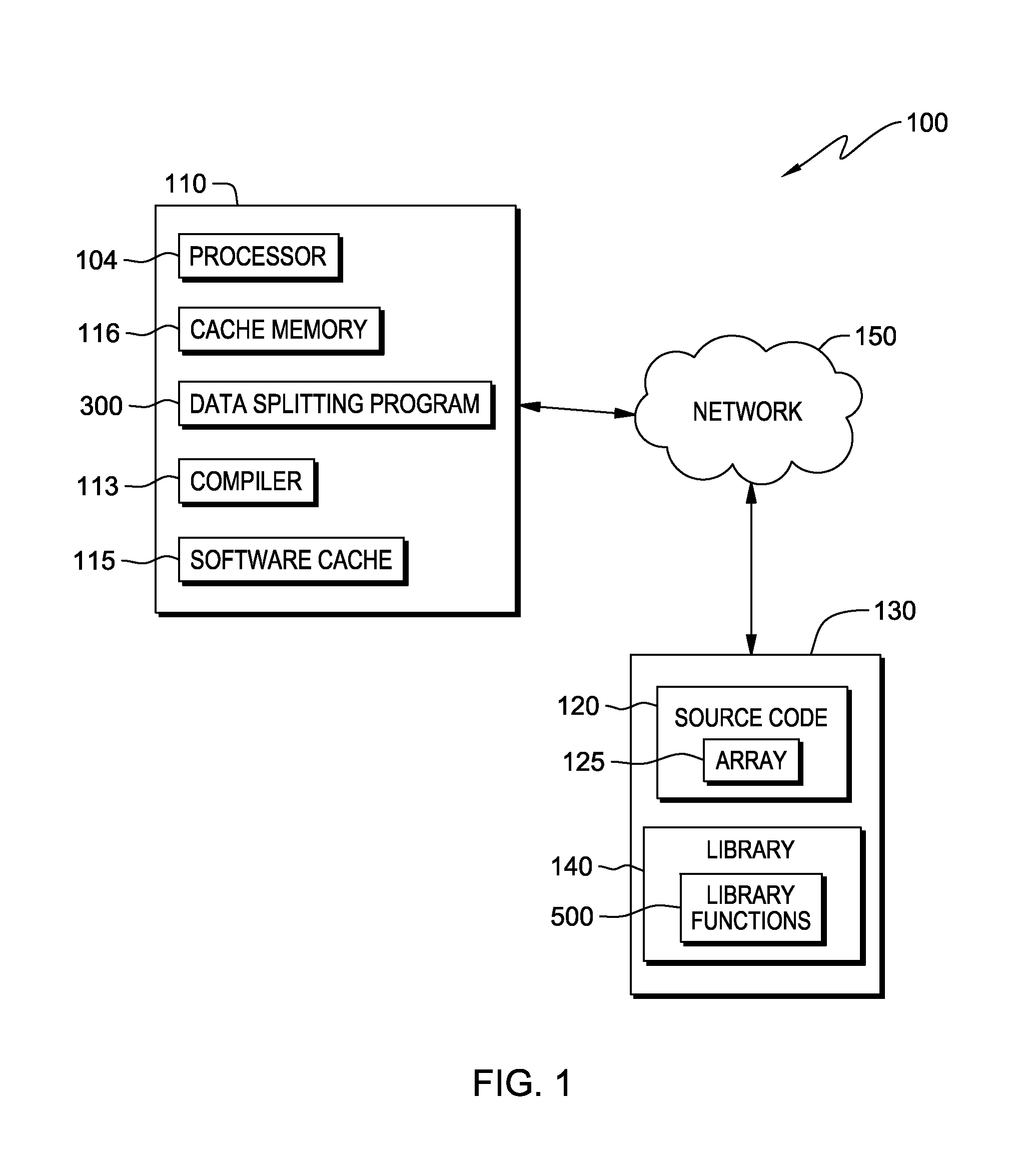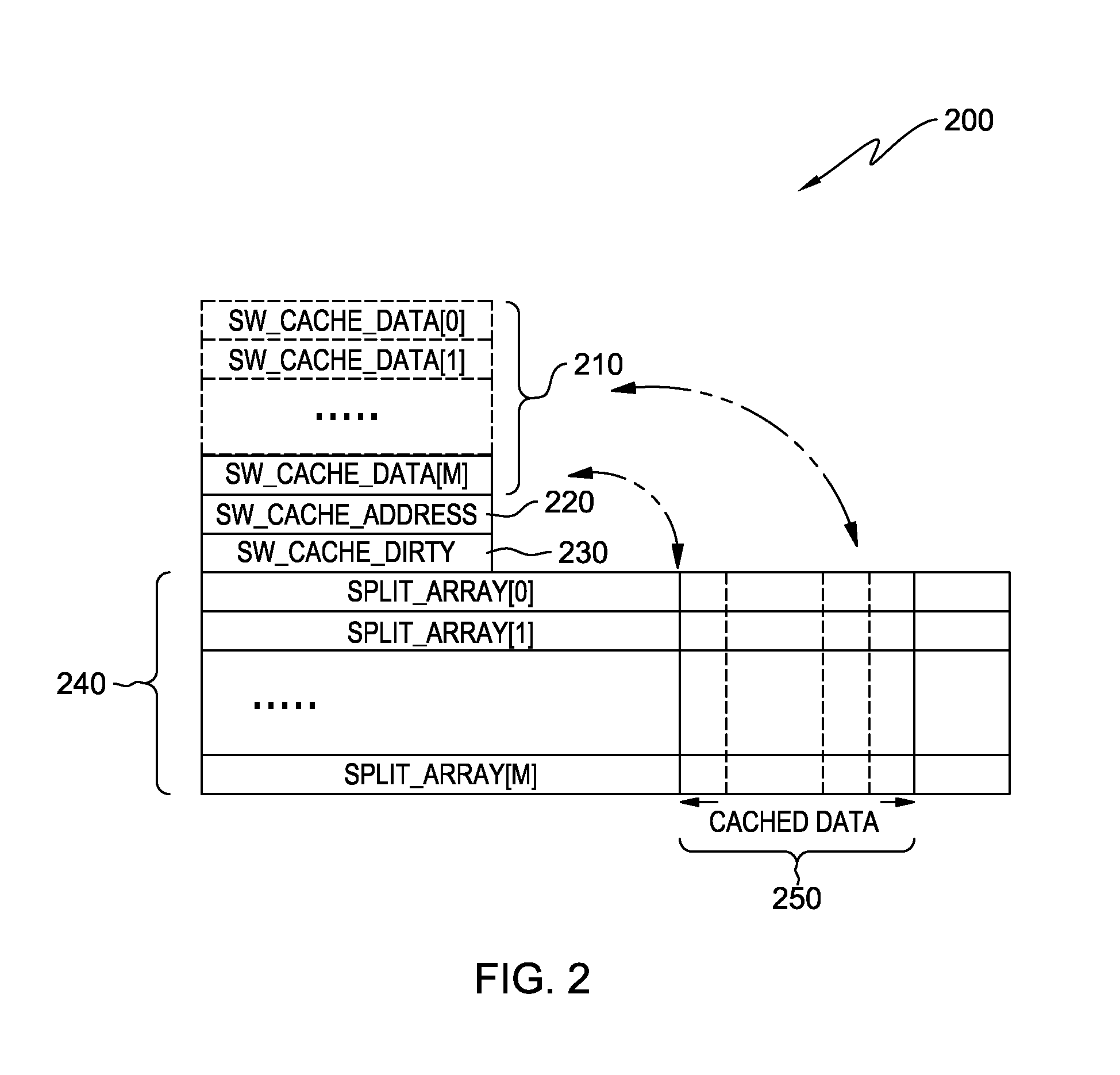Optimizing memory bandwidth consumption using data splitting with software caching
a data splitting and memory bandwidth technology, applied in memory address/allocation/relocation, instruments, program control, etc., can solve the problems of limiting the performance of some applications, memory bandwidth and memory latency are trade-offs, and memory bandwidth limitations are likely to become wors
- Summary
- Abstract
- Description
- Claims
- Application Information
AI Technical Summary
Benefits of technology
Problems solved by technology
Method used
Image
Examples
Embodiment Construction
[0014]Embodiments of the present invention recognize that moving unwanted memory into cache is a waste of memory bandwidth and cache. Existing compilers improve the cache utilization by splitting the data structure into two separate data structures. Ideally, optimal cache utilization is reached for high iteration loops if the object variable is further split so that only the referenced bits are fetched into the cache. This may introduce bit manipulation overhead in other regions of the program code when the variable is accessed differently.
[0015]Embodiments of the present invention provide a novel and efficient method for data splitting of static arrays or dynamic object aggregate member arrays in order to achieve optimal cache utilization and better data cache efficiency for the entire program at runtime. The method is to select and further split the data type of an array or an aggregate member based on the code pattern of its references in the program. Embodiments of the present i...
PUM
 Login to View More
Login to View More Abstract
Description
Claims
Application Information
 Login to View More
Login to View More - R&D
- Intellectual Property
- Life Sciences
- Materials
- Tech Scout
- Unparalleled Data Quality
- Higher Quality Content
- 60% Fewer Hallucinations
Browse by: Latest US Patents, China's latest patents, Technical Efficacy Thesaurus, Application Domain, Technology Topic, Popular Technical Reports.
© 2025 PatSnap. All rights reserved.Legal|Privacy policy|Modern Slavery Act Transparency Statement|Sitemap|About US| Contact US: help@patsnap.com



